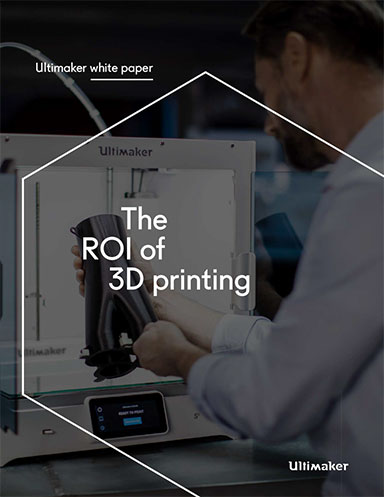3D Printed Graphene Recharges Battery Design

Researchers from the Virginia Tech and Lawrence Livermore National Laboratory have developed a 3D graphene printing process that enables the creation of ultra-light, high-resolution complex shaped parts that offer mechanical strength and excellent thermal and electrical conductivity. The new technique holds great potential for the production of custom-sized batteries and supercapacitors. Image courtesy of Ryan Hensleigh, Virginia Polytechnic Institute and State University.
Latest News
September 27, 2018
A 3D printing technique developed by researchers from Virginia Tech and Lawrence Livermore National Laboratory (LLNL) promises to revolutionize the way manufacturers produce batteries and supercapacitors. The graphene-based fabrication process enables the production of high-resolution complex objects, sporting excellent mechanical strength and high thermal and electrical conductivity, as well as low weight density, according to researchers. Armed with these capabilities, the technique has the potential to sweep aside shortcomings of current technology that have limited the shape and size of objects created with graphene.
Overcoming Graphene’s Shortcomings
Prior to the introduction of the new printing technique, engineers found fabricating complex graphene structures to be problematic. Typically, the 3D printing of graphene aerogel — a synthetic, porous, ultra-light material — has been done using direct-ink or other extrusion-based methods, where layers of graphene are squeezed through a nozzle. The process creates objects by stacking multiple layers on top of one another.
When graphene sheets are stacked in this fashion to form a 3D shape, they become graphite, which has poor mechanical properties. “This technique was limited to simple log pile-like structures because the paste was not self-supporting,” says Ryan Hensleigh, a macromolecular science and Engineering Ph.D. student at Virginia Tech and a member of the research team.
One of the major challenges to overcoming this shortcoming has been identifying a graphene aerogel resin compatible with the micro-stereolithography process.
As a result of these factors, engineers have been restricted to using graphene and this technique for the production of parts with simple geometries. To enable graphene to reach its full potential, scientists needed micro-architectured 3D graphene aerogel structures with greater resolution than anything created before with other 3D printing methods.
Chemical Reactions and Light
The researchers’ remedy for this situation takes the form of a multi-step process that begins with graphene oxide. Processing of the oxidized graphene begins with the application of a coating of epoxy. The epoxy crosslinks, or bonds, the graphene sheets together, creating a foam. The scientists then bombard the foam with ultrasound, breaking the material into micron-sized pieces in solvent. To the solution, they add a mix of light-sensitive acrylate polymers and other chemicals required to make the liquid resin ready for 3D printing.
The research team then uses projection micro-stereolithography to create the desired solid 3D structure. This technique shines light onto an array of mirrors, which are individually controlled like pixels to either reflect or block the light to make an image. The image is then put through microscope optics in reverse to make the large image into a very small, high-resolution image, which is displayed onto the liquid resin. The light causes chemicals in the resin to bond the acrylic polymer into a solid, trapping the graphene oxide inside a replication of the projected image.
The researchers repeat this process, recoating more resin on top of the existing material, stacking layer upon layer to make a 3D structure. They then place the 3D structure in a furnace to burn off the polymers and fuse the object together, leaving behind a pure, lightweight graphene aerogel. Scientists consider this material to be the least dense solid in existence.
To get an idea of how light the material can be, graphene aerogels have proven to be light enough to balance on small plants, such as a flower.
High-Resolution, Complex Geometries
Until now, 3D graphene fabrication has often been limited to relatively simple structures because of the intrinsic limits of the fabrication process. The work of the Virginia Tech-LLNL team, however, demonstrates an efficient pathway to optically print 3D graphene aerogels capable of taking the form of complex, hierarchical 3D architectures of interconnected graphene sheets. The scientists have shown that the photo-activated resin can be precisely patterned by light into any desirable shape, with 3D spatial feature sizes of roughly 10 microns and strut microstructure having pore sizes on the order of 60 nm. This capability promises to open new opportunities for complex, free-form 3D graphene assemblies.
“Because we can attain such small and complex images with light — as opposed to a gantry system, with an extruding syringe — we can get the complicated structures with the fine resolution we were seeking,” says Hensleigh. “The high resolution allows us to make low-density structures. A precise control of 3D feature sizes could lead to many beneficial mechanical and multi-functional properties of 3D graphene assemblies.”
The unprecedented low densities of the graphene structures also brings other performance enhancements. “Typically when you make something lower in density it becomes less conductive, but graphene has shown it can stay highly conductive at ultra-low densities. Incorporating it allows you to improve performance while reducing weight,” says Hensleigh.
In the future, this 3D graphene printing technique could also scale to larger applications. “Theoretically, if you built a big enough stereolithography system, you could make very large graphene structures, on the order of meters,” says Hensleigh. “Practically, right now we can go from tens of microns to centimeter sizes. Our technique does allow you to print essentially any structure you want, even very complex structures.”
New Use Cases
One of the most likely applications of the new 3D graphene printing technology is the production of battery and supercapacitor electrodes. “Because we can achieve arbitrary shapes and light weight while having high electrical conductivity, we can reduce overall weight while maintaining or improving performance,” says Hensleigh. “Our technique also allows arbitrary shapes, so if the application is space-limited, you could design a battery to fit the given space with our technique.
Uses of this technology, however, are unlikely to stop there. Another possible application might be in bone tissue engineering. In this case, scientists try make artificial bone outside of the body. Graphene is of interest here because of its stiffness and mechanical strength. Stem cells on graphene/polymer composites tend to naturally form bone cells due to the stiffness of the composite. Conceivably, scientists could use the new approach to 3D print a custom bone implant based on the needs of the patient and infill it with their stem cells to form a more natural bone implant.”
Subscribe to our FREE magazine, FREE email newsletters or both!
Latest News






